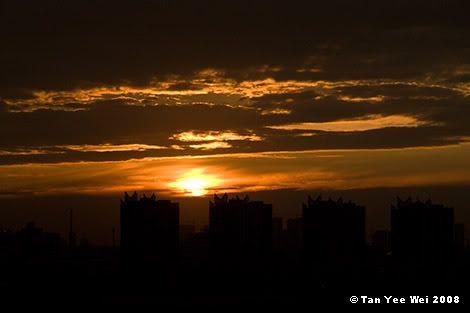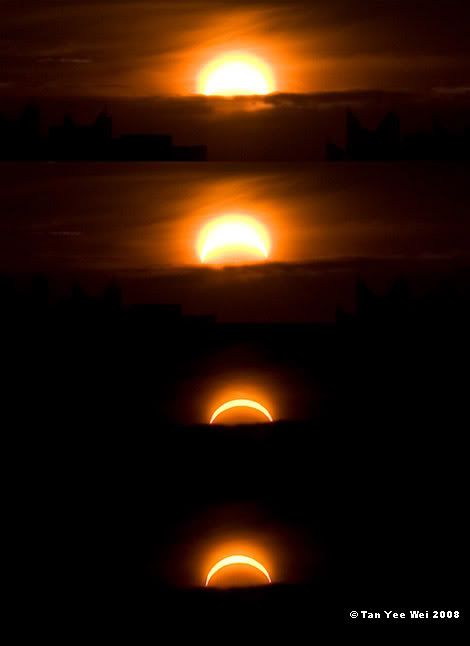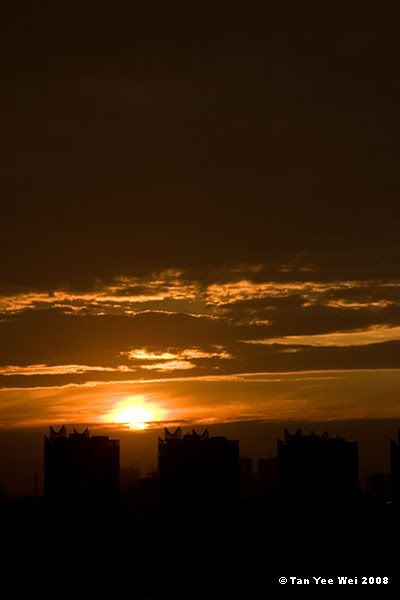01/08/08 partial solar eclipse over Tianjin
Today, a total solar eclipse was visible for observers along a long, narrow region in the northern latitudes. A partial eclipse, however, was visible from a much larger area. [view affected areas]
Populations in the Greenland, the entire of Europe, most of the Middle East, the entire Indian subcontinent, most of Russia and China except for the eastern-most coasts could observe at least a partial blotting of the sun.
At Tianjin, the eclipse spectacle appeared to be a no-show due to cloud cover. However, just a few minutes prior to sunset the sun revealed itself from behind the clouds.

Click here for large size image
The eclipse was not obvious due to the brightness of the sun; it would not be wise to stare at the sun with the naked eye. However, brief glances with a skimming motion could reveal that the light source was not symmetrical.
By using the lowest sensitivity setting on a camera and short exposure times, it was possible to verify that something had taken a bite out of the sun.

Solar Eclipse
Click here for large size image
ISO 100, f/16 and various exposure times
As the earth continued to rotate, the sun hid behind more clouds, and the show was over.

Populations in the Greenland, the entire of Europe, most of the Middle East, the entire Indian subcontinent, most of Russia and China except for the eastern-most coasts could observe at least a partial blotting of the sun.
At Tianjin, the eclipse spectacle appeared to be a no-show due to cloud cover. However, just a few minutes prior to sunset the sun revealed itself from behind the clouds.

Click here for large size image
The eclipse was not obvious due to the brightness of the sun; it would not be wise to stare at the sun with the naked eye. However, brief glances with a skimming motion could reveal that the light source was not symmetrical.
By using the lowest sensitivity setting on a camera and short exposure times, it was possible to verify that something had taken a bite out of the sun.

Solar Eclipse
Click here for large size image
ISO 100, f/16 and various exposure times
As the earth continued to rotate, the sun hid behind more clouds, and the show was over.

Labels: natural science, photography

<< Home